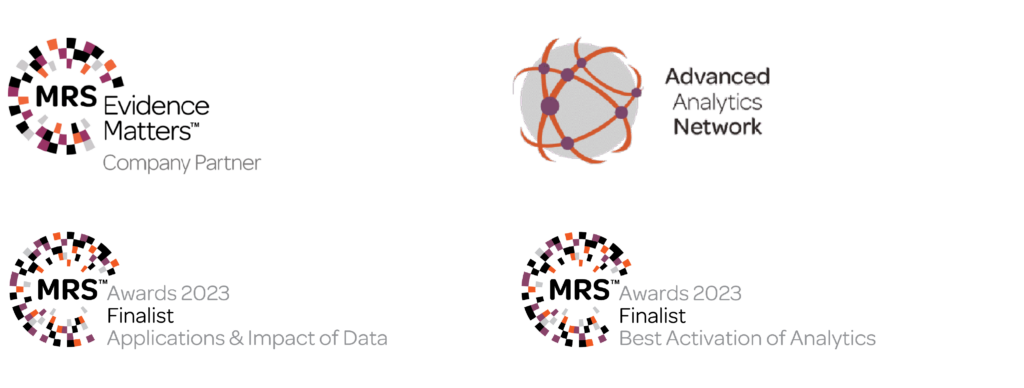Historical data is a treasure trove of insights that is often undervalued, underutilised, and overlooked by businesses. Despite companies holding more data assets than ever before, to get a useful ‘historical’ dataset for analysis means scouring several data sources and putting these all together – which can get tricky in the detail.
For some businesses, there may be decades worth of data which can uncover relationships that simply cannot be found from point in time studies, and which can identify macro themes and drivers that emerge over much longer time spans that bring valuable insights. Again, it’s worth pointing to the value of the high-level view and taking a wider lens on outcomes like for sales drivers, that other datasets simply won’t give a perspective on.
Econometric modelling: Mostly science but also an art
Teasing insights from historical datasets requires econometric modelling, which employs statistical methods to apply mathematical models to the data, forecasting future trends and elucidating relationships between economic variables. While data and statistical methodologies are fundamental, integrating domain knowledge, intuition, and creativity is equally crucial.
A note that while AI and deep learning methods are cutting edge and not to be underestimated, they often lack the transparency needed for analysing historical data. This makes space for traditional econometric and marketing mix models, on the other hand, which offer clear insights and are much better suited for strategic decision-making, ensuring that the relationships between variables are intuitive and actionable.
Here we present two cases studies whereby we used historical data to drive value – importantly ensuring that the models make sense and are not simply black box.

Case study 1
Marketing mix modelling: Optimising media spend
Marketing mix modelling is a powerful tool for companies looking to optimise their marketing budgets. This method evaluates the impact of different marketing channels on sales, helping businesses allocate resources more effectively. However, the process isn’t entirely scientific; it requires human insight to explore the data and apply domain-specific knowledge and creativity when integrating various features.
A large multinational media company sought to optimise their return on investment (ROI) across various marketing channels. By analysing historical campaign data and brand KPIs over a period spanning more than 8 years, we developed a sophisticated model that elucidated the short and long-term impacts of advertising spend.
The outcome had a profound impact: marketing spend was reduced by 50%, yet audience listenership remained unchanged. In other words, the company was able to cut its marketing budget in half without losing any of its audience. This optimisation extended their reach and maximised the effectiveness of their marketing budget, illustrating the concept of diminishing returns on channel spend.
This case study exemplifies how a harmonious blend of science and art can significantly enhance marketing efficiency. We continue to run the study off the back of this success and optimise their media spend as the market continues to evolve.
Case study 2
Demand forecasting: Delivery services
For a food delivery client, precise demand forecasting was vital for optimising staffing and marketing resources. Staff were often under-utilised when there was low demand and stretched too thin particularly when demand was high.
By amalgamating multiple data sources and employing an ensemble of algorithms, we developed highly accurate models, which could forecast well beyond the training data and into the future. These models enabled the client to forecast sales at various levels, from individual stores to entire markets, and test different future scenarios.
This deeper understanding of sales drivers facilitated better marketing spend allocation and supported the client’s growth strategy. Accurate demand forecasting also helped optimise operations, leading to improved customer satisfaction and operational efficiency.
This case study underscores how blending data science with industry insights can drive strategic advantage and can save businesses vast sums of money over time.
Conclusion
The true value of historical data lies in its ability to inform strategic decisions through robust econometric and marketing mix models, as well as precise forecasting techniques. However, ensuring data quality, avoiding fitting models to noise, and critically interpreting results are paramount.
By combining advanced analytics with human expertise, businesses can transform historical data into actionable insights, driving sustainable growth and strategic advantage. Ultimately, it is the harmonious blend of science and art that unlocks the full potential of data.
If you’re interested in finding out more please don’t hesitate to get in touch, or contact Steven Pesarra directly at steven.pesarra@bonamyfinch.com.
Ebook
Unlock the commercial value of your data
Download our ebook to learn how to create an effective data-driven culture by integrating high-quality data into everything you do – helping you become more customer-centric, make better decisions, and surpass your revenue goals.



